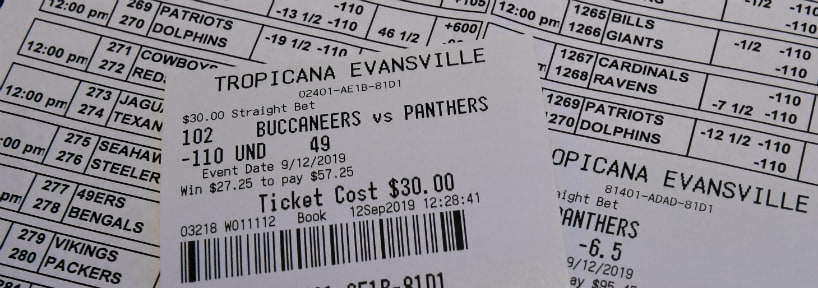How To Read Betting Odds Ratio
- How To Read Betting Odds
- How To Read Odds Ratio
- Betting Odds Explanation
- How To Read Betting Odds Ratio Interpretation
Odds are an essential element of sports betting. Recognizing just how to read odds is a vital action to becoming an effective sports wagerer. From establishing just how much money you intend to bet to figuring out which bets provide the most value, all of it starts with a strong understanding of the probabilities.
See: Moneyline Betting. How To Read a Total (Over/Under) If you aren’t interested in betting on either side, you can opt to bet on the total instead. Betting the over-under is when you attempt to predict the combined total points scored by the two teams involved in a given contest. With this type of bet, you’re looking more at how the game. How to Calculate Betting Odds and Payouts. One of the reasons why horse betting is difficult is because the odds fluctuate every time a bet is placed. This fluctuation is called pari-mutuel wagering, or pool betting. In typical betting games, you’re betting against the house. With horse racing you are betting against other betters.
What you might not have known is that there are several different ways of expressing odds, or that odds are carefully connected to the chance of a wager winning.
We SportsDiction.com cover whatever you need to learn about odds in this article. We prompt you to take the time to go through all this information, particularly if you are fairly new to sports wagering.
Generally, odds are used to identify the amounts paid on winning bets. This is why they are commonly described as the “cost” of a wager. A wager can have a cost that’s either odds on or odds against.
- Odds On – The possible quantity you can win will certainly be less than the amount you bet.
- Odds Against – The possible quantity you can win will certainly be higher than the amount you bet.
Probably, you’ll encounter every one of these formats when playing online. Some sites allow you to pick your layout, but some do not. This is why recognizing all of them are very valuable.
This is the format most generally used by wagering sites and used mostly in Europe. Because it is the simplest and most basic of the three formats. Decimal odds, which are typically shown making use of two decimal locations, show specifically how much a winning bet will certainly return per unit staked.
When using decimal odds, the estimation required to function out the potential return is very simple.
If you intended to put a $100 bet on the PSG at 3.00 you would simply require to increase your $100 bet by the 3.00 chances (100 x 3.00) to find out that the payment is $300. It is necessary to understand that with decimal style odds it includes the quantity you bet, so to discover revenues you would require to deduct your bet ($300-$100) to find out your possible payment is $200 in revenues.
If you wished to position a $100 bet on Barcelona you would certainly once more simply increase ($100 x 1.55) to figure out that you would win $155 total amount of $55 in revenues.
American odds are utilized mostly in the United States. There are several various versions of sports betting chances, but these American Odds are the most typical odds used. Reading and also recognizing sports wagering odds can be a little confusing to newbies, so we have given an example listed below making use of two football teams:
American odds can be either positive (the appropriate number will certainly become before by a + indication) or negative (the appropriate number will certainly be preceded by a – indication).
Positive American odds show how much earnings a winning bet of $100 would make. In this example you can see Everton is listed at +150, it means that a $100 wager could win you $150. You’d also obtain your stake back, for an overall return of $250.
Negative American odds show how much you require to bet to make a $100 revenue. In this example Manchester city is listed at -120, it means that a wager of $120 might win you $100. Again you would obtain your stake back, for an overall return of $220.
Fractional odds are most frequently used in the UK, and also when banking on equine auto racing. Here are some simple examples of fractional odds.
- 6/1 (six to one)
- 5/2 (five to two)
- 15/8 (fifteen to eight)
A fractional listing of 6/1 (six-to-one) odds would suggest that you win $6 against every $1 you wager (in addition to obtaining your dollar back, i.e. $1– the amount you wagered). To put it simply, this is the ratio of the amount (profit) won to the first wager, which indicates that you will certainly obtain your stake ($1) in addition to the earnings ($6), resulting in a total return of $7. If you bet $10 at 6/1, you get a complete return of $70 ($60 revenue + $10 stake).
The following calculation is used, where “a” is the first number in the fraction and “b” is the second.
In order to understand odds in sports betting, it is important first to understand some basics. The simplest example of odds is a two sided coin, heads and tails. Each time the coin is flipped there is a 50% chance that it will land on heads and a 50% chance that it will land on tails. Both of these percentages add up to 100%, where the probability of all possible outcomes must adds up to 100%.
To put it simply, the odds are the probability of a certain outcome. The way they are displayed in various forms helps punters identify how they will be paid on the various odds. We will show you how to read betting odds by explaining how they are notated as well as betting and payout examples. Be sure to see our odds notation conversion chart at the bottom of the page.
Odds Notation: Decimal Odds, Fractional Odds and American Odds
You will notice that odds are sometimes displayed differently. We will explain the main odds notations you will see at various sports books. Often sports betting sites will allow for punters to choose the way the odds are displayed. Just keep in mind that they are ultimately displaying the same odds, just in a different way. It is good idea to be familiar with all types in case you are not given the choice, but find a good site that provides favorable odds. It is a personal preference, but I typically like to use the decimal system when available. It is the most straightforward.
Decimal Odds (European Odds): 4.00
This form of odds divides 100 by the number percent of a certain outcome (100/%chance = decimal odds). For instance, if a particular team is given a 25% chance to win outright, the Decimal Odds on such an event would be 4.00 or (100/25 = 4).
Payout Structure: If you were to place a bet on these odds and win, you would get a 4 to 1 payout. So for every 1 unit of currency played, the player would receive 4 back in total payout if they win. Notice that this includes the profit of 3 and initial bet of 1.
(Decimal odds x Initial Bet = Total Payout)
Betting Example: Let’s suppose you bet Rs. 1000 on decimal odds of 4.00 and you win. The math would be as follows: (4 x 1000) = Rs. 4000 Payout. Again, this will include your profit + initial bet.
Fractional Odds (English Odds): 3/1
This system of notation is typically found among UK bookmakers. This odds notation is expressed in a fraction. If we used 25% again, the fractional form would be 3/1. This expression is saying that for every 4 occurrences (3+1), a negative outcome will occur 3 times and a positive outcome will occur 1 time. Another way to look at it is a ratio of losses to wins (Losses/Wins). To calculate your profit, simply divide the numbers and multiply it times your initial bet.
Payout Structure: If you placed a bet on 3/1 odds and won, you would win 3 units, plus your initial unit bet for a total payout of 4.
(Fractional Odds x Initial Bet = Profit) => (Profit + Initial Bet = Total Payout)

Betting Example: So, if you placed a bet of Rs. 2000 and won on these odds, you would ‘win’ Rs. 6000 and also receive your original bet of Rs. 2000 for a total payout of Rs. 8000. Where 3/1=3, and 3 x 2000 = Rs. 6000 in profit. Again, you would also get your initial bet back of Rs. 2000 for a total payout of Rs. 8000.
Let’s say the odds were 3/2 instead. The math would look like this (3/2 = 1.5) => (1.5 x 2000 = Rs. 3000 Profit ) => (3000 Profit + 2000 Initial Bet = Rs. 5000 Total Payout).
American or US Odds: +300
You will notice that a lot of US facing bookmakers use this notation. These odds are sometimes referred to as “lines” or “money lines”. This notation is easier when betting in $100 increments, but of course it can be used for smaller bets as well.
How To Read Betting Odds
It uses (+) or (-) as standard notation. A plus sign (+) indicates how much will be won in profit for a 100 unit bet. A minus sign (-) shows how much is needed to bet in order to win 100 units. For the same 25% odds, the American Odds notation would be +300.
Payout Structure: For US odds of +300, you would ‘win’ 300 units for every 100 bet, and receive your initial bet of 100 for a total of 400 units. If the odds were -150, you would need to bet 100 in order to ‘win’ 150 for a total payout of 250.
Betting Example: If you bet $100 on +300 American odds and won. You would ‘win’ $300 and get your initial investment of $100 back for a total payout of $400.
Let’s say you bet $50 on the same +300 American odds and won. In this case you would win $150 in profit, plus your initial investment of $50 for a total payout of $200.
If you bet on -150 odds, in order to win $100, you would need to bet $150. If you won, you would receive your profit of $100, plus your initial bet of $150 for a total payout of $250.

How To Read Odds Ratio
Let’s say you bet $75 on the same odds of -150. If you won the bet you would receive $50 in profit, plus your initial investment of $75 for a total payout of $125.

Betting Odds Explanation
Odds Conversion Chart
How To Read Betting Odds Ratio Interpretation
| Percentage | Decimal | Fractional | American | Bet | Profit | Payout |
| 1% | 100 | 99/1 | +9900 | Rs. 1,000 | Rs. 99,000.00 | Rs. 100,000.00 |
| 5% | 50 | 49/1 | +4900 | Rs. 1,000 | Rs. 49,000.00 | Rs. 50,000.00 |
| 10% | 10 | 9/1 | +900 | Rs. 1,000 | Rs. 9,000.00 | Rs. 10,000.00 |
| 20% | 5 | 4/1 | +400 | Rs. 1,000 | Rs. 4,000.00 | Rs. 5,000.00 |
| 25% | 4 | 3/1 | +300 | Rs. 1,000 | Rs. 3,000.00 | Rs. 4,000.00 |
| 40% | 2.5 | 3/2 | +150 | Rs. 1,000 | Rs. 1,500.00 | Rs. 2,500.00 |
| 50% | 2 | 1/1 | +100 | Rs. 1,000 | Rs. 1,000.00 | Rs. 2,000.00 |
| 60% | 1.67 | 2/3 | -150 | Rs. 1,000 | Rs. 667.67 | Rs. 1,667.67 |
| 80% | 1.25 | 1/4 | -400 | Rs. 1,000 | Rs. 428.57 | Rs. 1,428.57 |
| 90% | 1.11 | 1/9 | -900 | Rs. 1,000 | Rs. 111.11 | Rs. 1,111.11 |